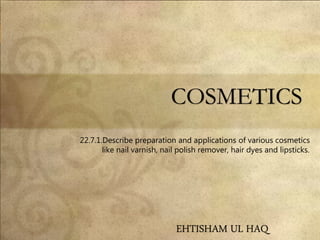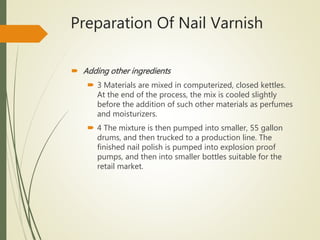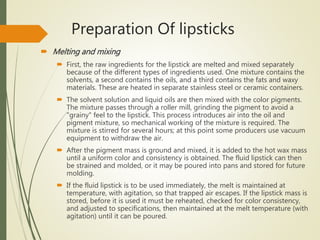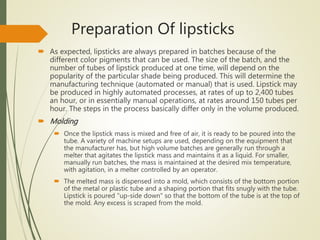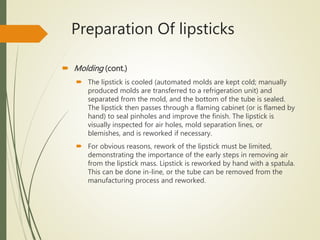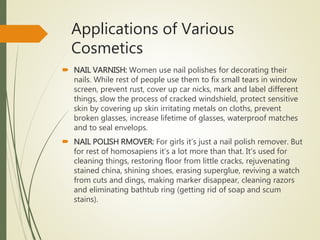Nail varnish is prepared by mixing pigments with nitrocellulose and plasticizers using a mill. The mixture is then combined with solvent in a heated kettle before being pumped into bottles. Nail polish remover contains solvents like acetone and conditioners. Hair dyes are made by weighing and mixing ingredients in tanks, then filling and packaging bottles. Lipsticks involve separately melting ingredients before mixing them with color pigments, molding the mixture into tubes, labeling, and packaging the final product.
